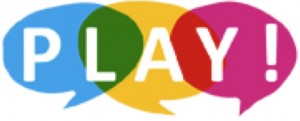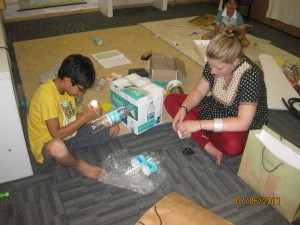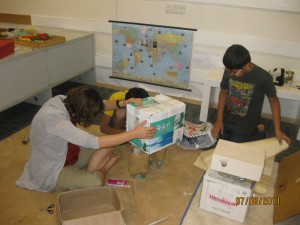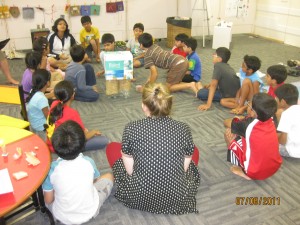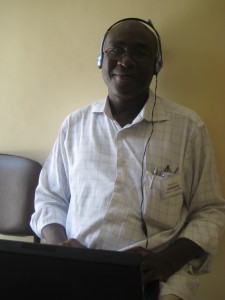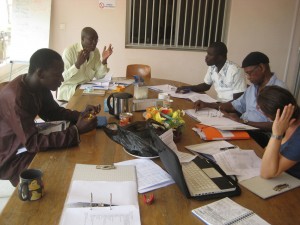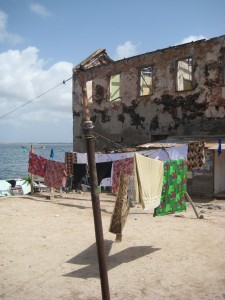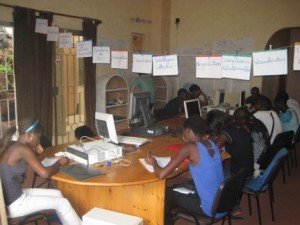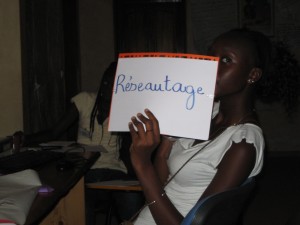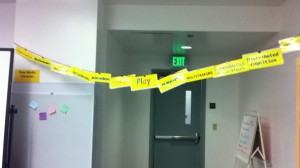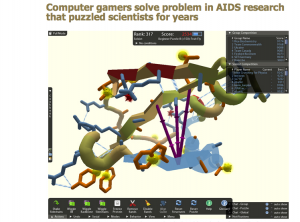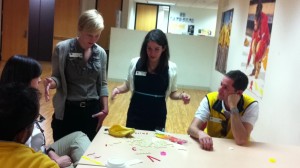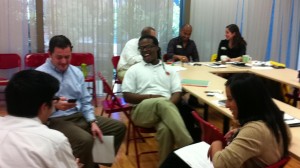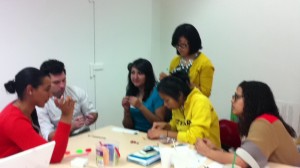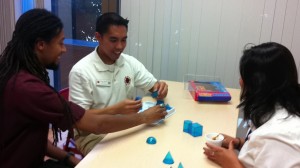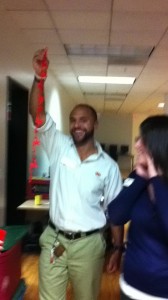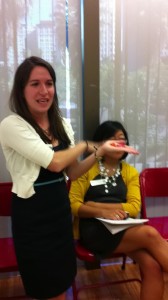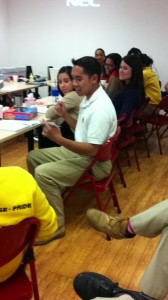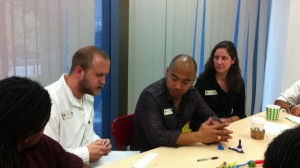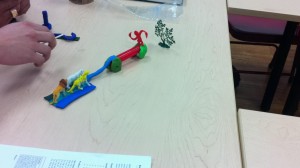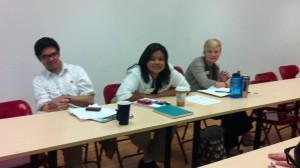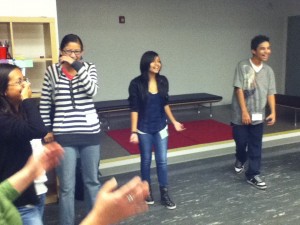 Today I had the honor of participating in a conversation organized by DML Central‘s ConnectedLearning.tv about the power and importance of play. The featured guest, Nirvan Mullick, is the innovative filmmaker behind Caine’s Arcade and Caine’s Arcade 2, and architect of Imagination Foundation and Global Day of Play, among other things. His groundbreaking work — sharing the creativity and passion of a young Angeleno boy’s cardboard arcade, leveraging its mini-viral popularity, creating a scholarship foundation for Caine, and building a global movement — is inspirational to say the least.
Today I had the honor of participating in a conversation organized by DML Central‘s ConnectedLearning.tv about the power and importance of play. The featured guest, Nirvan Mullick, is the innovative filmmaker behind Caine’s Arcade and Caine’s Arcade 2, and architect of Imagination Foundation and Global Day of Play, among other things. His groundbreaking work — sharing the creativity and passion of a young Angeleno boy’s cardboard arcade, leveraging its mini-viral popularity, creating a scholarship foundation for Caine, and building a global movement — is inspirational to say the least.
This conversation was organized by Jon Barilone, Community Manager of DML Central, moderated by Tara Brown, Technology Director of DML Research Hub, and enriched by contributions from Isaiah Saxon of DIY.org and Monika Hardy of the be lab. Of course, chatty ol’ me also said a thing or 10. And I would have said more if I was following the webinar’s LiveStream chat! Great backchannel conversation.
The webinar’s collaborative document listed the following as key quotes:
- “This was lightning in a bottle in my world. This tremendous opportunity, but also this tremendous pressure to try to make the most of it.” – Nirvan
- “There should be a seamless gradient from their naive play to what adults would recognize as work.” – Isaiah
- “We have to create a culture where play is not only acceptable, but valued. Where we’re demonstrating that we care about play and creativity.” – Laurel
- “Making/playing is a platform for kids to have the confidence to try a new skill they don’t have yet.” – Isaiah
———————-
For me, interesting points of the conversation include (but are not limited to): playing vs. making; values vs. rewards; capacities vs. checkmarks; practice vs. philosophy; today vs. tomorrow.
- Playing vs. making
I’m interested in creating a Venn diagram for these two concepts, playing and making, because I find them to be interrelated and even overlapping at times yet not synonymous. Isaiah said that in order to make, one must play; I agree. But in order to play, one does not have to make — that is, unless we define “making” more broadly to encompass making narratives, making interpersonal connections, making characters, making decisions, etc. I feel that makerspaces and hackerspace are havens for tangible tinkering — taking an object and transforming it in some way. But by definition, play does not require any objects. In fact, my favorite way to play — improv — insists upon no props, no sets, no nothing.
Isaiah elaborated that to earn a Skill badge on DIY.org, one must complete at least 3 challenges that incorporate play. So play is in the DNA of making. But what is in the DNA of play? USC Dornsife’s Joint Educational Project will pilot a badge system in which service-learners can earn badges in play. Designing challenges that support play proficiency is on my To-Do list for — now-ish, I suppose :-), and by “now-ish” I mean NOW, since we’re launching this in February 2013. I’m looking forward to demystifying (and complicating) a process/concept we all thought we already understood: play.
- Values vs. rewards
I characterized badges as expressions of values, ways to show community members what we care about. By recognizing Attendance Award winners, schools show that they care about kids coming every day. By letting a student walk to lunch first because she raised her hand without calling out, a teacher shows that he cares about turn-taking and orderliness. Do these rewards motivate and incentivize behavior? Perhaps, to a point — extrinsically. We all know that the value of such methods is limited and we do not want to create a generation of individuals who require external validation.
I care much less about people working for the reward, and much more about the symbolic value of giving time and attention to a certain set of values. I like what badges express. When an organization supports a play badge, it says, “We care about play.” When an organization connects a group of badges to its program, it says, “These are possible outcomes of your work. These are some goals we find worthwhile.” To learners — who may understandably assume that this learning context is just like the rest, and that their job is to sit passively and spit back the expected responses — it declares, “This time, it’s different.” Badges show what you can explore, do, become. “Welcome, current and budding Players, Zoologists, Engineers. This experience transcends an A in who-knows-what. This experience is open for you to grow.”
Maybe this sounds idealistic and naive. Maybe that’s my specialty. ;-) I just think we need to unambiguously show learners that the world is rich with possibilities, and have our learning contexts reflect and honor that richness.
- Capacities vs. checkmarks
Educational standards have become (or were they always?) a dirty word. Our American educational system is not federal but wide adoption of The Common Core moves us closer towards national norms. Is this a hollow affair at best, a time-sucking or even sinister situation at worst?
It depends on what you believe standards do. From Monika, it sounded like she believes that standards superficially designate “good” and “bad” where such qualifiers don’t exist — there is just difference.
So far, I can only think of examples where I disagree… I’m struggling to play devil’s advocate with myself and find a case that will support her point. Perhaps I’ll get there as I share my own position.
I think there are basic skills that allow people to play the game. If you don’t know how to dribble, you can’t really play basketball. You can make up your own game with different rules and not have to dribble at all, or only dribble in a certain kind of way. That’s fine. But that’s not basketball. Whether we want to transition to this new game becoming THE game and replacing basketball, that’s a separate issue. But this new game is not basketball. To play basketball, you have to be able to dribble.
So that’s what I think of when I consider standards. To be able to read, you have to understand phonemes. To be able to subtract, you have to understand the number line. Teaching these skills to children is an important task we give to schools. Standards articulate this expectation, this part of schools’ job description. By the end of the year, the students should understand X, be able to do Y.
Standards become problematic when the learning goals they outline are: 1) irrelevant; 2) beyond students’ zone of proximal development (either too easy or too hard); or 3) chained to inappropriate instructional methods. If/when any of these criteria describe standards, then the standards should be rewritten. But in my opinion, the phenomenon of standards should not be dumped all together.
I want our children to be able to engage with challenging texts. I want them to be able to express themselves so that comprehension is not limited by writers’ poor grammar but by listeners’ own willingness to engage. I want our children to be able to look at a pie chart and know what it means. I want our children to be able to calculate which carton of orange juice at the grocery store is a better deal per milliliter. And of course, I want our children to love themselves, treat one another with respect, and dream of what never was and ask why not (to borrow a phrase from the late, great Bobby Kennedy).
Isaiah said that his ideal middle school would consist of two required courses in character-building and five electives whose content would authentically integrate standards/basic skills. Amazing idea. To that integration end, I encouraged educators to identify the basic skills already embedded in creative projects, and to discover diverse subjects’ interrelationships, e.g., a social science standard within the scope of a science project.
Let’s help school enable, rather than prevent, education.
- Practice vs. philosophy
What we believe is one thing; what we do is often another. How can we make our teaching reflect and support our philosophies? What can we DO? Fabulously time-strapped teachers legitimately ask for this concrete guidance; in many cases, educational advocates are preaching to the choir instead of giving them a hand. Of course teachers want to support their students; if they didn’t, they wouldn’t have gone into this (largely thankless) profession. But how are they supposed to get the job done? Even though I know better, sometimes I catch myself teaching in the same way that I was taught (didactially) and taught to teach (by the book/standard/standardized test). I need a model for another way; I need practical guidelines; I need an example. I think we all do.
In terms of a model, in today’s conversation I presented participatory learning (which is similar to connected learning). In a playful participatory learning context, educators surrender some classroom control in order to honor students’ self-directed learning and creativity, embrace technology and digital media even in the absence of personal expertise/mastery, and value process over product – that is, escape the tyranny of perfection (Vartabedian & Felt, 2012, p. 62).
In terms of practical guidelines, I shared the five characteristics of participatory learning (hereafter referred to as the “5 CPLs”). Our research from USC Annenberg Innovation Lab’s PLAY! project and, previously, from Project New Media Literacies, found that rich learning flourishes with the establishment of these values and practices:
The 5 CPLs
● heightened motivation and new forms of engagement through meaningful play and experimentation;
● an integrated learning system where connections between home, school community and world are enabled and encouraged;
● co-learning where educators and students pool their skills and knowledge and share in the tasks of teaching and learning;
● learning that feels relevant to the students’ identities and interests; and
● opportunities for creating and solving problems using a variety of media, tools and practices (Project New Media Literacies 2010; cited in Felt, Vartabedian, Literat & Mehta, 2012)
The following tool might help educators and their students to discern whether and to what extent their learning contexts qualify as participatory. Areas of weakness are simply spaces for development and innovation.
4 C’s of Participation Inventory
- How do we provide mechanisms to CREATE?
- How do we offer opportunities for media [which can be understood as messages and information] to CIRCULATE across platforms, disciplines and ages?
- How do we help learners to COLLABORATE and build upon others’ knowledge?
- How do we encourage learners to CONNECT with counterparts and establish productive networks?
(Reilly, Jenkins, Felt & Vartabedian, 2012)
In terms of a sample activity or curriculum, I suggested improv games. Improv establishes a context in which to develop essential and versatile skills, and improv’s respectful implementation helps to co-create a culture in which risk-taking is encouraged, “failure” is acceptable/impossible, collaborating is key, and gift-giving is just how we roll.
I think we’re still figuring out the HOW. But I think that getting down to these brass tacks, discussing practice rather than philosophy, is necessary in order to avoid old habits and move forward.
- Today vs. tomorrow
A ConnectedLearning.tv community member shared a question via chat. While this query set off our riff about standards, it also inspired my final comment about who we reach out to and how we conceptualize our goals. We would be remiss if we focused exclusively on either today or tomorrow; we must consider both.
Exchanging concrete practice is very today-oriented, extremely here-and-now. The task of identifying standards across one’s teaching is also contemporary. It speaks to what’s currently on the books. For today, let’s do all we can to hack/mod the system, establish standards crosswalks, and connect our ideals with our realities. We can’t abandon today to rhetoric of tomorrow. And, institutionally, we can’t abandon formal education to the potential of informal learning. Our children are in school for many hours every day; I refuse to surrender that time and just invest in the outside. Nothing against the informal! But a formal does exist. Let’s dig in and fix a thing or two NOW.
In terms of tomorrow… We we all know that our educational system is sick. We all know that a lot of renovation is required. So let’s also reach out to the funders, architects, and contractors of that system — in other words, government officials and representatives, school board members, and curriculum developers. Let’s ask them to build school spaces that look less like factories and more like labs, libraries, coffee shops, and meeting rooms. Let’s ask them to write standards that are neither irrelevant nor beyond students’ zone of proximal development nor chained to inappropriate instructional methods. Let’s ask them to offer professional development workshops that model and encourage playful participatory learning.
Let’s work better today. And let’s build a better tomorrow.
I’ve embedded today’s webinar below and welcome the opportunity to continue this conversation on Twitter! Please talk back to me via @laurelfelt and/or hook this up with the communal discussion via #connectedlearning. Thanks again!



